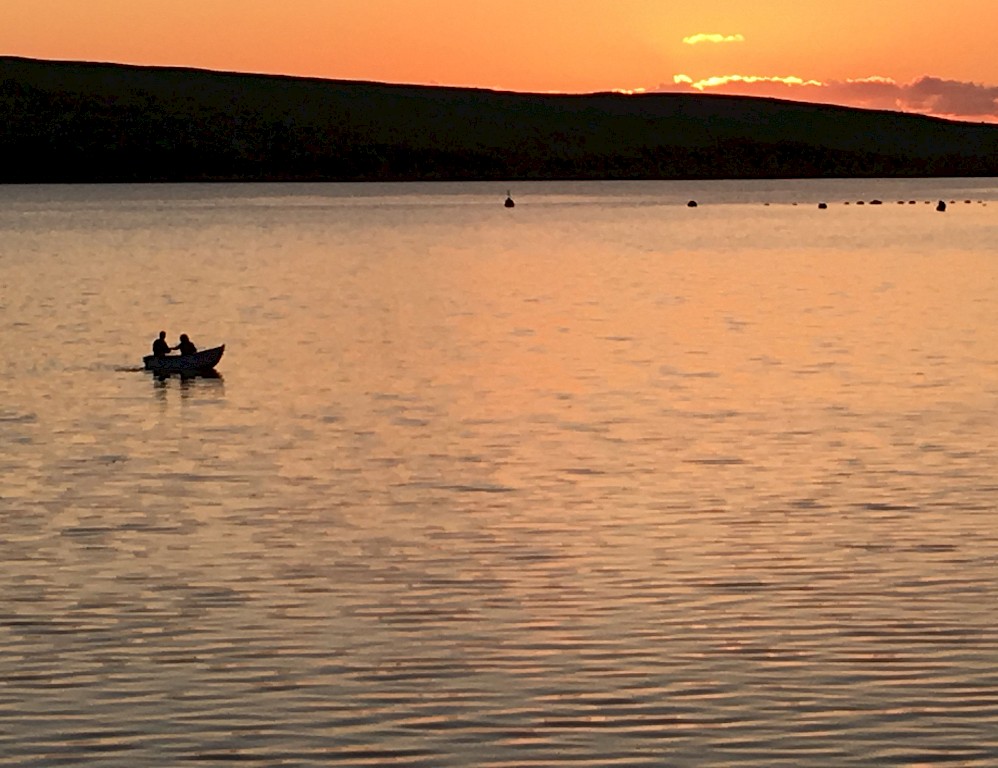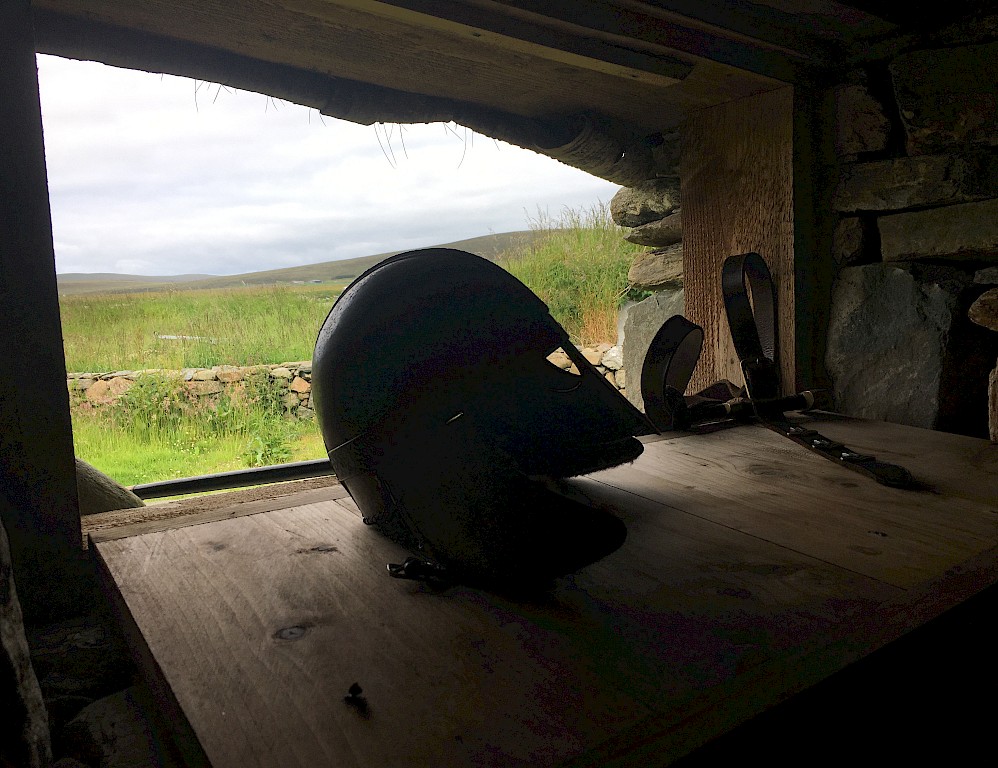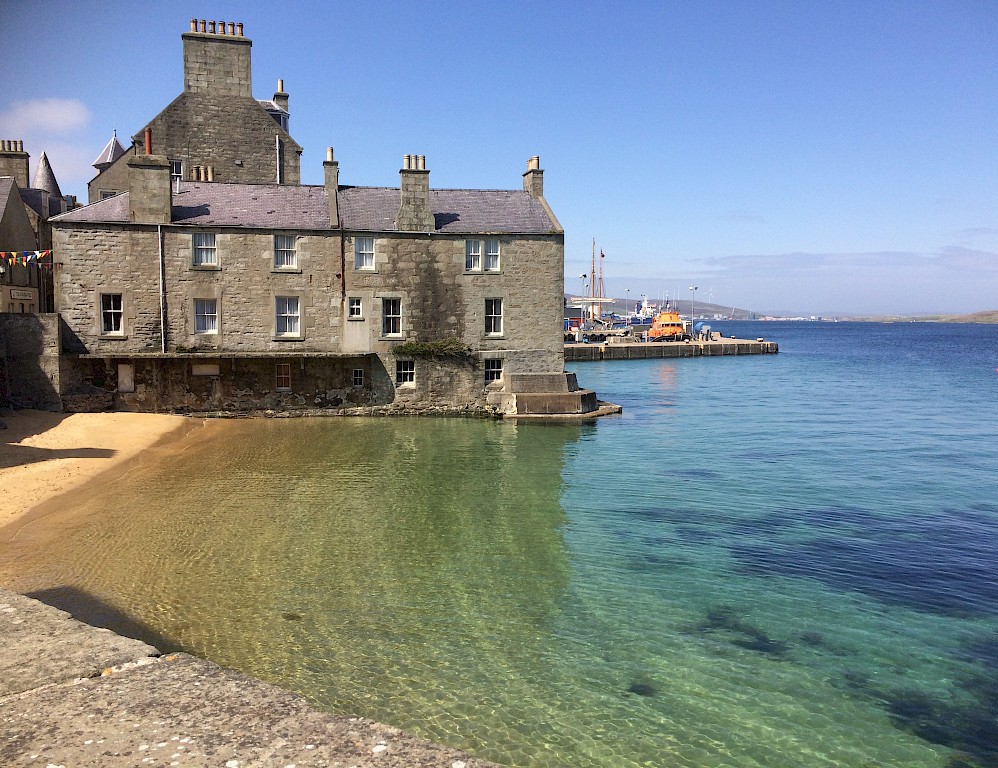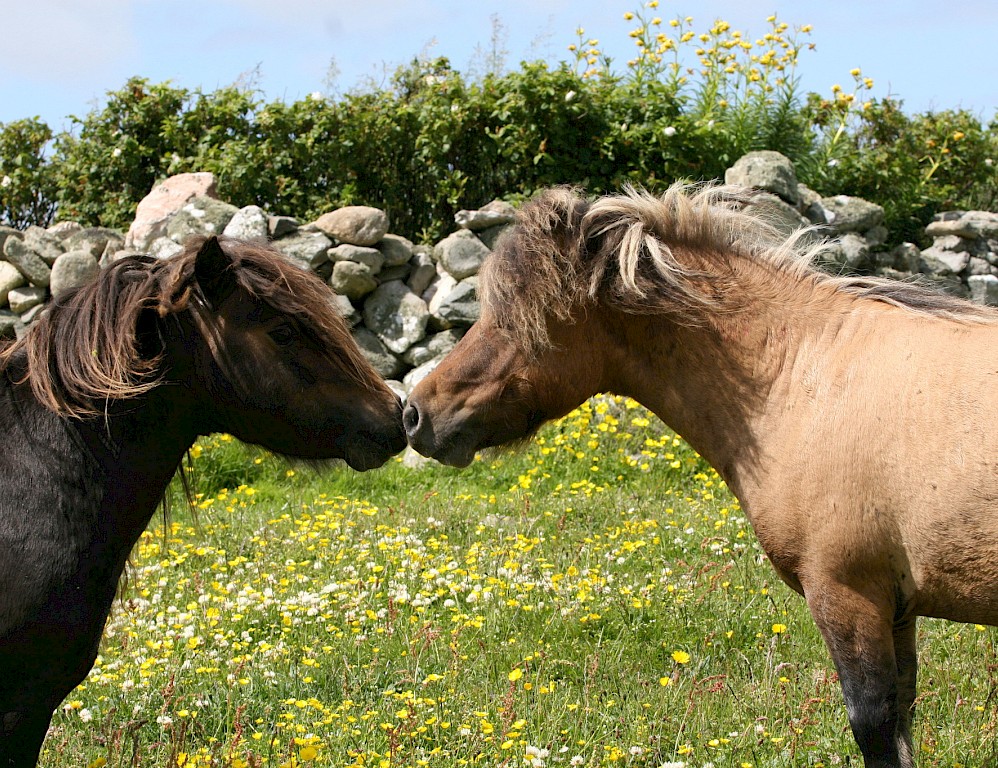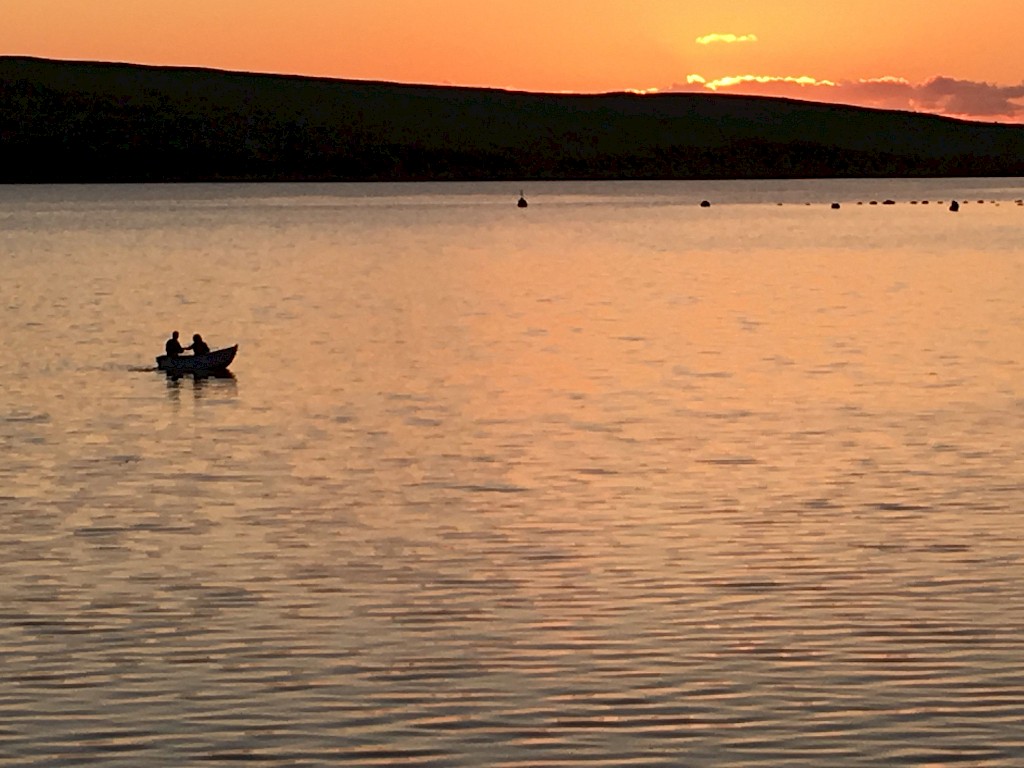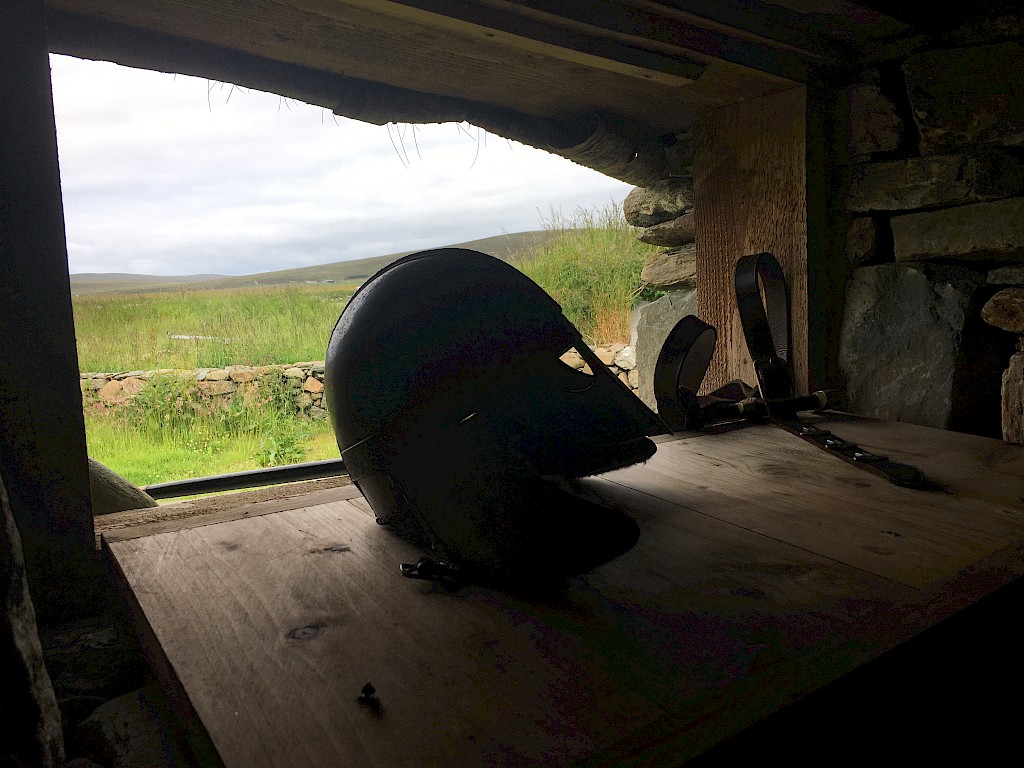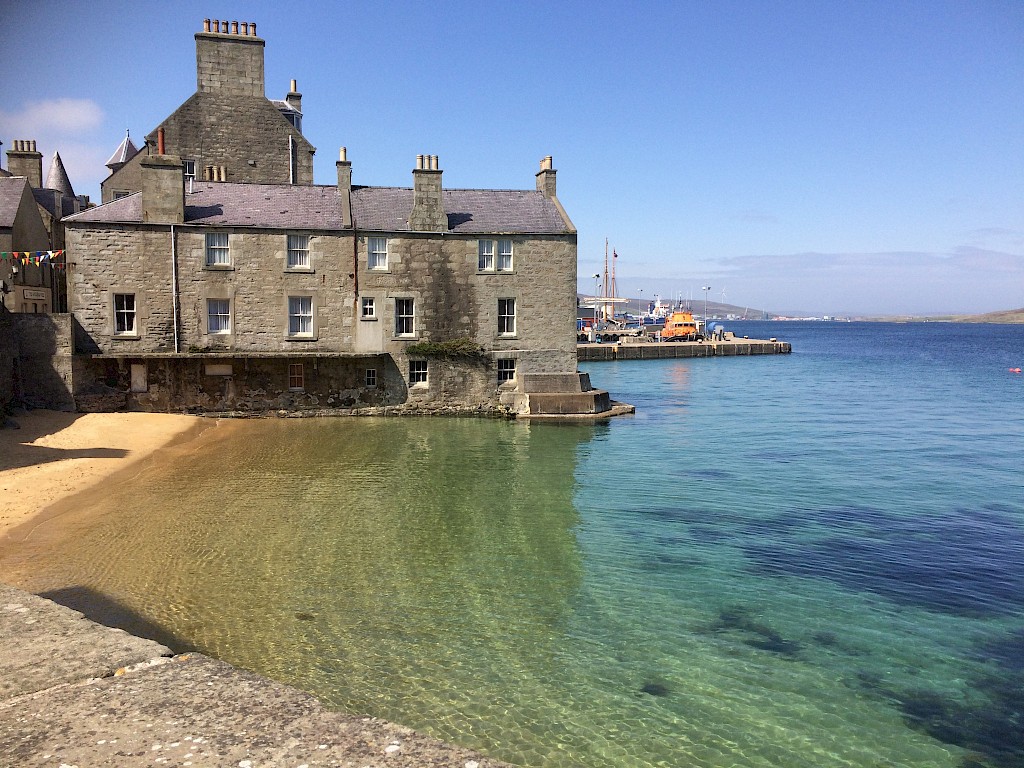Ruth is your guide, offering small group or individual tours of Shetland from South to North, Central Mainland and the North Isles of Unst and Yell. New tours include the Shetland Pony Experience and a traditional crofting experince on the island of Bressay. Her love of the islands, the beautiful scenery and stunning wildlife inspired Ruth to train as a tour guide and share the experience of Shetland with others. Tours can be tailored to suit timescales, mobility or other preferences and requirements.
North Mainland Tour
A tour to the north-west of Shetland gives you wild and rugged scenery, majestic cliffs and magnificent views.
Passing through Mavis Grind (‘Mavis’ a Norse word for narrow piece of land and Grind meaning gate) it is the narrowest part of the Shetland mainland and it is said you can throw a stone from the Atlantic Ocean into the North Sea. (you would need a strong arm!)
Beyond the 'Gate', and into north (Northmavine) you will notice a dramatic change in the surrounding landscape, this area of igneous intrusive rocks is dominated by Shetland's highest point, Ronas Hill, 1,486 feet (450 metres) above sea level. It is formed from a very distinctive red granite. Ronas Hill is home to some rare alpine plants. The steep, southern slopes drop abruptly into Ronas Voe, one of Shetlands two fjords.
We will then visit Heylor, on the southern shore of the voe. At one time this was one of the most important herring stations in Shetland. It is also a good place for Otter spotting!
From Heylor, we travel west to the district of Eshaness, here we take in the most majestic cliffs and sea birds. This is a good place to stretch your legs and enjoy the breath-taking views. The road ends here at the Eshaness lighthouse. Along the coast and clearly visible are layers of ash, lava and agglomerate from an ancient volcano.
A popular spot for photographers is the 'Dore Holm', a natural arch made of the volcanic rock andestite. Nearby is the picturesque Beach of Stennes, one of the main 'Da Haaf' (Deep Sea) fishing stations in the 18th and 19th centuries.
A visit to the Tangwick Haa Museum will give you a flavour of Shetland life, history and culture and introduce you to a character from the past known locally as 'Johnny Notions', We then head back south to Lerwick and on the way catch a glimpse of the Sullom Voe Oil Terminal, the second largest in Europe.
Along the route you will see open rugged landscapes, derelict croft houses from times gone by beautiful lochs and the ever changing ocean.
Ruth can arrange to book lunches/snacks at the Braewick Café but cost is not included in package.
South Mainland Tour
This shorter tour is particularly suitable for cruise ship passengers. (approx. 5-6 hours)
This tour which usually begins at Scalloway, the ancient capital of Shetland and at one time was dominated by the castle built in 1600 by Earl Patrick Stewart. The village lies six miles west of Lerwick and played a central role in the 'Shetland Bus' operation in The Second World War.
From Scalloway we head south diverting through the very picturesque district of Fladdabister. Like most places in Shetland, the name derives from the ancient Norse language and means 'flat farm'.
Fladdabister is a good place to see Shetland Ponies and hosts an abundance of wild flowers in the summer time. A few miles further on we approach the Sandwick viewpoint. Nearby is the site of what was the Sand Lodge copper mine which operated from 1799-1923 and, in its day, was the biggest such mine in Scotland. From the viewpoint, we can also look eastwards to the island of Mousa on which the best preserved broch (Iron Age tower) in Scotland stands some 13 metres high and dating back to around AD200.
Our next stop is Bigton, looking over to St Ninian's Isle and the famous beautiful tombolo a stretch of shell sand that connects the island to the mainland. If time and weather permit, we can walk over to the island and visit the site of the ancient church. In 1958, an archaeological dig was taking place at this spot. An eleven-year-old school boy was helping and whilst digging in the nave of the medieval church he struck treasure- a wooden chest containing 28 silver objects, thought to be Pictish in origin and dating to around 800AD. They are now housed in the National Museum of Scotland, Edinburgh.
Our southward journey takes us past some exotic beaches and landscapes where, at certain times of the year, it is possible to see dozens of North Atlantic Grey Seals hauled out on the sand.
A further 15 minutes or so takes us to the south end of the Shetland mainland. The road crosses the main runway of Sumburgh Airport.
At the eastern end of the West Voe Beach is Jarlshof, one of the most important archaeological sites in Scotland. The name was coined by Sir Walter Scott in his novel, The Pirate, published in 1822. A series of excavations have taken place and it is now possible to follow a clear timeline tracing evidence of continuous human habitation, dated at the time of the excavations, from 2,700BC to the 1600sAD.
Our final stop is Sumburgh Head Lighthouse, now a visitor centre. It is a fairly steep climb up the winding tarmac pathway from the visitor car park to the lighthouse complex but the views are magnificent and from mid-April to mid-August the cliffs are host to thousands of seabirds: Guillemots, Razorbills, Fulmars and of course, everybody's favourite, the remarkably tame and cute Puffin! Also, from the cliff-side walk, one can glimpse other birds such as Great Skuas, Arctic Skuas, and Gannets. ( Transport up to the lighthouse can be arranged for anyone with mobility problems).
Throughout the tour we can stop for photos of the amazing scenery, visit cafes and places of interest depending on your interests and requirements.
On the return journey to Lerwick, we call by the Shetland Croft House Museum where you can experience a flavour of the harsh Shetland life a hundred years ago.
Central Mainland Tour
The Central Mainland is one of the furtile and bonniest parts of Shetland, due to the limestone nature of the soil. It is also steeped in history, Scalloway castle with its own story of intrigue and corruption, originally the ancient capital of the islands. Close by Tingwall Valley was home to the Norse parliament for over 300 years.
The tour usually begins by a visit to the islands of Trondra and Burra, connected to each other and the mainland by bridges. These islands are a photographer's paradise! At secluded spots, one can regularly see North Atlantic Grey Seals hauled out of the water at low tide. Also, there are Shetland Ponies in abundance. The churchyard at Papil has produced several Christianised Pictish stones, in particular the 'Papil Stone' and the 'Monk's Stone', the originals now in the National Museum of Scotland, Edinburgh. A short drive and an even shorter walk give a breath-taking view of the Minn Beach.
Returning to Scalloway we visit the castle, built in 1595 by Earl Patrick Stewart, a relative of Mary Queen of Scots, although very much a ruin now there is still much to explore.
The importance Scalloway played in the Second World War through the brave exploits of the 'Shetland Bus' operation has forged a link between Scalloway and Norway a link which remains strong today, with many Norwegians coming to visit the museum and other areas in the village that tell the story of events during these troubled times.
From Scalloway we head north through the fertile Tingwall Valley which in the summer months, abounds in wild flowers. The Asta and Tingwall Lochs are favourites with anglers due to the excellent Brown Trout population. Whooper Swans which normally breed in Iceland are commonly seen migrants but Tingwall can boast its own breeding pair.
At the north end of Tingwall Loch is the site of the ancient 'Ting', the Norse word for 'parliament'. Here the Lawting took place annually for more than three centuries.
At the head of the Ting Loch stands Tingwall church and the old Manse the home of the Reverend Turnbull and his family, a story of tragedy and faith.
We then head westwards to the district of Whiteness stopping at the Wormadale viewpoint with its stunning view south over Whiteness Voe. The road winds its way north to the parish of Weisdale. A viewpoint high up on the west side of Weisdale Voe.
Our tour then takes us eastwards up the Weisdale valley passing the old Weisdale Mill, now restored and housing a shop, café and the Bonhoga Gallery, a venue for art exhibitions. A great place to stop for a cup of coffee. Around us is evidence of the clearances which took place in the 19th century to make way for sheep farms. We also pass the house which was the Executive Headquarters for the 'Shetland Bus' operation during the Second World War. Here also is Shetland's forest!! The Kergord plantations boast the greatest number of trees in Shetland. If your mind is on some other matter, even for a couple of minutes, then the likelihood is that you will miss your tree experience!!
A short distance further on there is a distinct change in the topography, the limestone giving way to metamorphic rock, thus the greenery giving way to the brown tones of heather-moorland and peat. We join the main north-south road taking the turn south that will eventually lead us back to Lerwick. On the way, we pass the Loch of Girlsta. A geological fault runs through this loch. Not only is it the deepest loch in Shetland but it is the only one that supports the Arctic Char, a fish related to Trout and Salmon. The loch is named after a Norse girl, Geirhildr, who drowned in its waters some 1,900 years ago.
A short distance from Lerwick, we pass the 18-hole golf course at Dale, a popular place for locals and visitors, especially in the long days of summer when we have forgotten what darkness is!
Islands of Yell and Unst Tour
The tour to Unst the most northerly island of Shetland includes two ferry rides one from Toft on the mainland to Ulsta on Yell (Shetland's second largest island) taking about 20 minutes. While on Yell, we can visit the Old Haa Museum, the Shetland Tweed Company and the Shetland Gallery. A scenic 25-minute drive across Yell takes us to Gutcher followed by a 10-minute ferry ride across to Belmont on Unst.
Unst is rich in archaeology with several brochs, standing stones and has the greatest density of rural Viking longhouses known.
This small yet beautiful island is part of Geopark Shetland and is home to some interesting geological sites one being the beach at Skaw where you find unusual and intriguing rock formations.
Unst is also rich in wildlife, its northernly situation makes it a major European breeding site for seabirds including Guillemots, Razorbills Skuas and Kittiwakes.
Our tour will include a visit to Muness Castle a 16th century fortified house.
A short drive to Bordastubble to see Shetlands largest standing stone.
For those up for a short but hilly walk a visit to Underhoull reveals breath-taking scenery and the remains of two Viking houses and broch.
In Haroldswick is the Unst Boat Haven housing Shetland traditional fishing boats. Displays can also be seen in the Heritage Centre of local crafts geology and geneology.
A light lunch or cream tea is a favourite at Victoria’s, the most Northerly tearoom in the UK.
We will visit Unst’s famous bus shelter, signing the visitors book is a must.
RAF Skaw ruins of a wartime radar station is on the way to the UK’s northernmost inhabit house before exploring the unique geological site of Skaw beach.
There is always a chance of spotting seals, otters and occasionally Orcas.
As with any tour of Shetland, flexibility is inbuilt, not least because of the weather. A good pair of walking boots is advised for this trip as well as warm, waterproof clothing.
Please be aware that when walking in some areas there may be rabbit holes and the terrain can be uneven.
Join a community of business owners and operators who share your ambition to make your businesses more profitable, successful and innovative as we seek to maximise opportunities in the growing tourism sector in Shetland.
